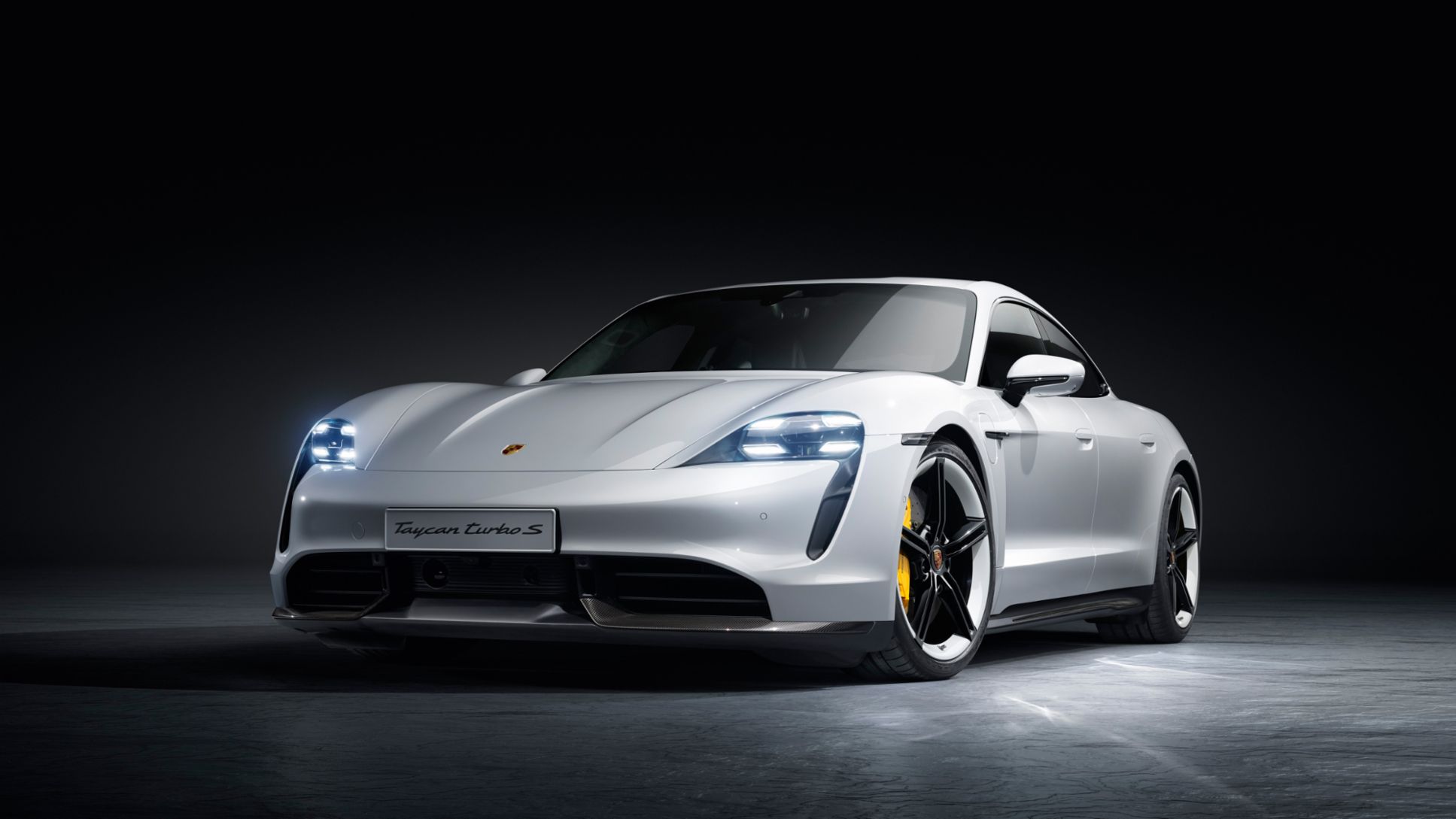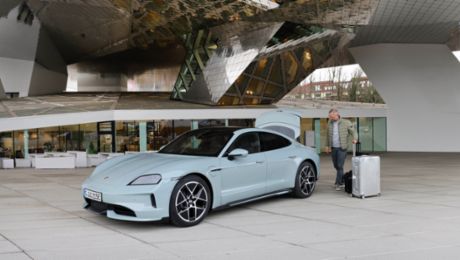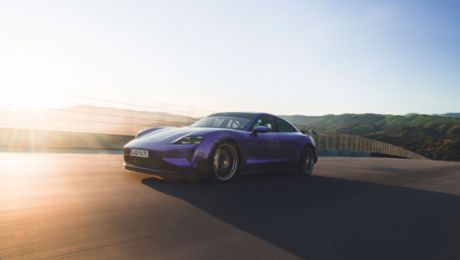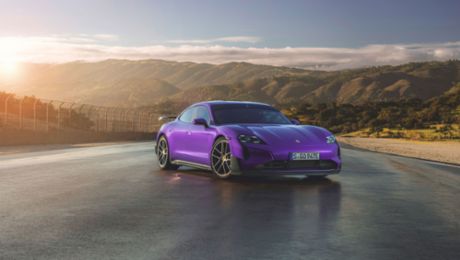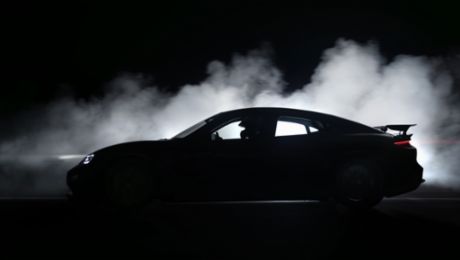The result is an emotionally charged, four-door sports saloon that carries the unmistakeable Porsche design DNA. Its silhouette is defined by the sporty roofline sloping downward to the rear – called a “flyline” by the Porsche designers. The highly sculpted side sections are also characteristic. The sleek cabin (the greenhouse), the drawn-in C-pillar and the pronounced shoulders of the wings result in a sharply emphasised rear, typical of the brand. At the same time, with its clean, pure approach and innovative elements such as the Porsche lettering in glass-effect in the rear light bar, the sports saloon signals that, at first glance, a new era has begun. However, the Taycan has remained very close to the 2015 Mission E concept car on the whole.
The front: a striking look with a unique light emblem
The Taycan is 1,966 millimetres wide, but only around 1,380 millimetres high. From the front, it therefore looks particularly wide and flat. Due to the compact drive components, the bonnet slopes down at a flat angle between the two highly pronounced wings, a feature typical for Porsche. The LED matrix headlights form a visual unit with the air curtains and seem to float. The four-point daytime running lights that are typical of the brand are flatter and wider than any other Porsche. Produced with three-dimensional glass elements, the result is a striking sports car look with a unique light signature. All the light functions are, for the first time, integrated in one module.
The cooling air intakes are smaller than in a vehicle with a similarly powerful combustion engine. Combined with the flatter front bonnet, this makes the Taycan look very sporty. The flaps integrated into the cooling air intakes not only control the air supply for the cooling and air-conditioning systems, but also cool the brakes efficiently in a targeted way. The roof line slopes down steeply. A typical feature of a sports car is also the recess in the middle of the roof. The Taycan is also available with a large panoramic fixed glass roof on request, which does not require any transverse bows.
The headlights: High-tech with design aspirations
The lighting technology plays a crucial role in the striking front end and the high recognition factor of the Taycan. The following headlight systems are available for the Turbo and Turbo S:
-
LED matrix headlights including PDLS Plus: the matrix deactivates segments of the permanent high beam cone in a targeted way. 84 individually controlled LEDs can be adjusted to the current situation by switching them off or dimming them. Vehicles in front or approaching vehicles are no longer dazzled, though the areas in between and next to them continue to be fully illuminated.
-
These LED matrix headlights with PDLS Plus are also optionally available in a special version from Porsche Exclusive Manufaktur, with a three-dimensional circuit board graphic in the headlight housing as well as daytime running light elements in Glacier Ice Blue. With these, the headlights appear to be in this colour from certain viewing angles.
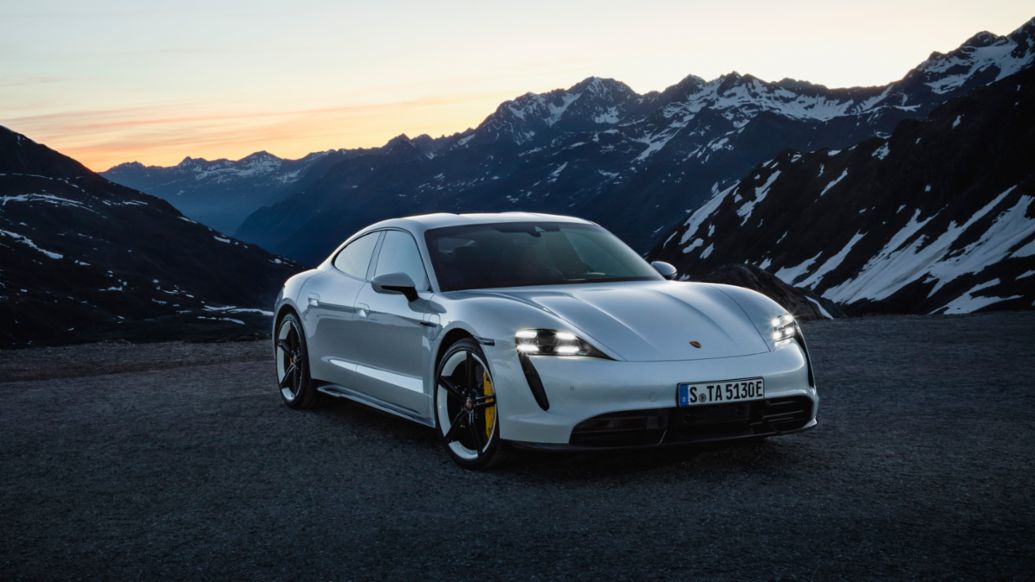
The side view: sporty proportions and sculptured surfaces
Short overhangs at the front and rear intensify the sporty proportions of the four-door model. The sleek cabin sits on a wide body, reinforcing the lean and muscular look. The typical Porsche flyline makes the vehicle appear sporty even when the car is at a standstill. The sculpted design, with strong recesses on the body and edges, creates an exciting interplay of light and shadow. The air outlets behind the front wheels are distinctive design features.
The flat door handles are flush with the doors and pop out electrically when required. Their visual appearance accentuates the distinct and modern overall impression of the vehicle. The same applies to the wheels, which have been optimised in terms of aerodynamics and weight. The highlights in the extensive wheel range include a 21-inch, five-spoke forged wheel with two-tone look in Brilliant Silver/Black (high-gloss), based on the wheel design of the Mission E concept car. Wheels with carbon aeroblades are also available from Porsche Exclusive Manufaktur.
The rear: Porsche lettering in a glass look with pcb graphic as a highlight
The sleek cabin (the greenhouse), the drawn-in C-pillar and the pronounced shoulders of the wings emphasise the wide rear, typical of the brand. A narrow bar illuminated from the inside stretches across the full width of the vehicle. The Porsche logo made of three-dimensionally shaped glass letters is located in this. A unique feature besides the glass-effect design: The lettering is embedded in a three-dimensional black circuit board design. Porsche Exclusive Manufaktur optionally offers this graphic with dark metallisation and the deep glass letters in the colours Glacier Ice or Black.
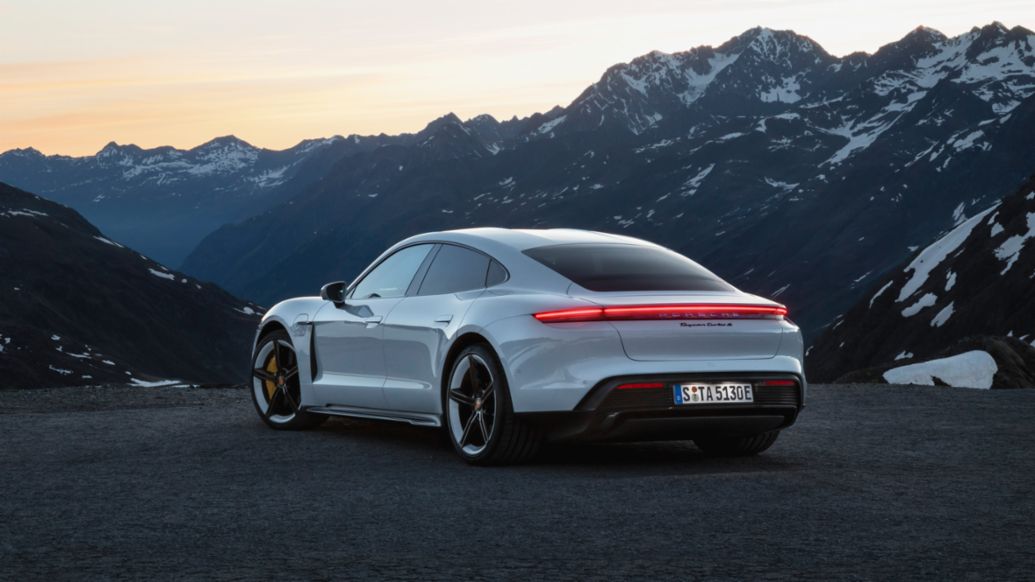
The number plate is placed very low down. The aerodynamically efficient rear diffuser with a subtle louvred look visually completes the vehicle in a downward direction. A typical Porsche feature is the rear spoiler, which extends in three stages depending on the speed (see the articles on body and aerodynamics). The horizontally arranged lines of the rear and the pronounced shoulders of the wings further emphasise the deep, wide sports car look of the Taycan.
Additional content
Sports cars, redesigned with sustainability in mind. The first all-electric sports car, the Taycan, marks the beginning of a new era for Porsche as the company systematically expands its product range in the field of e-mobility. An overview.
